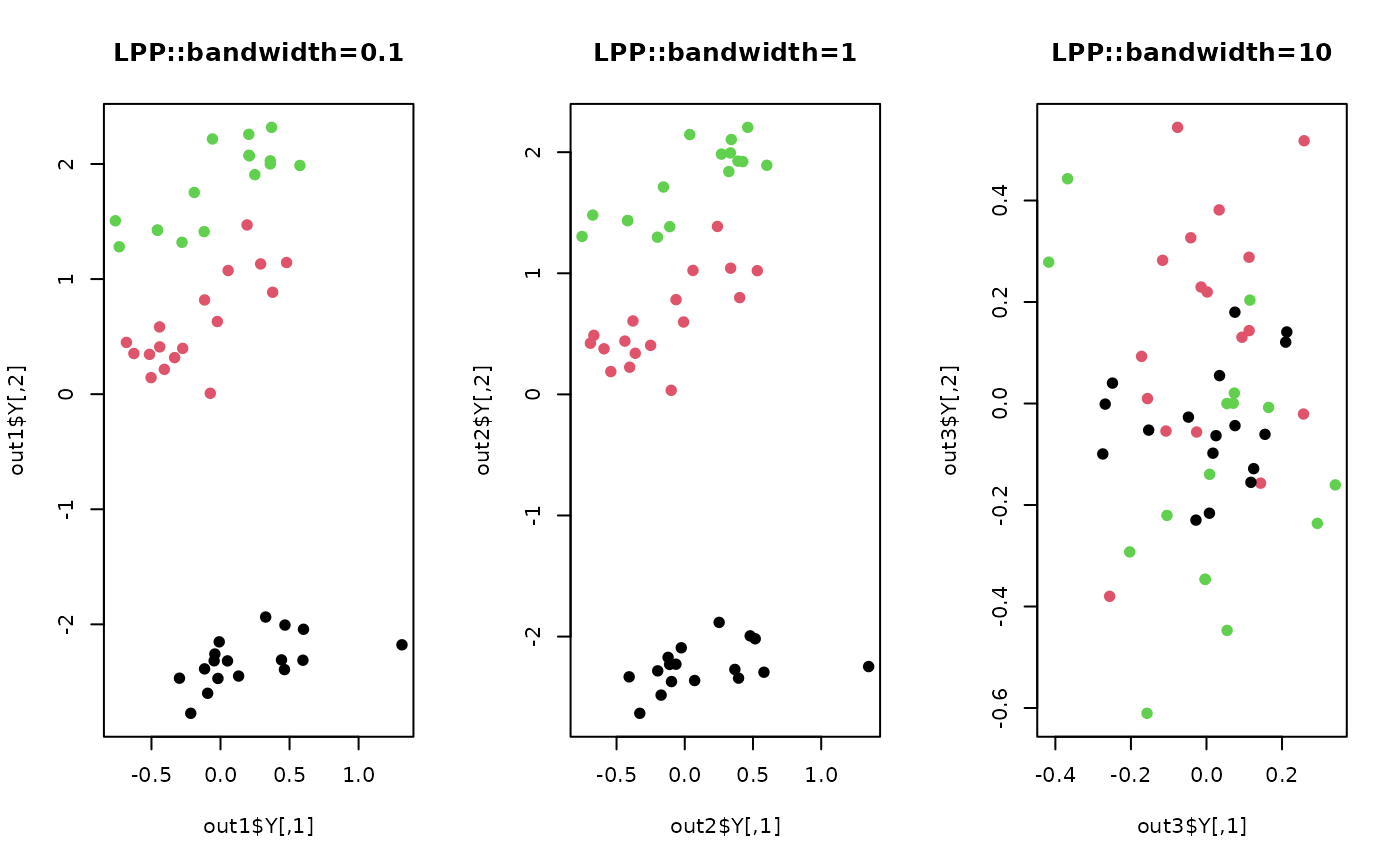do.lpp is a linear approximation to Laplacian Eigenmaps. More precisely,
it aims at finding a linear approximation to the eigenfunctions of the Laplace-Beltrami
operator on the graph-approximated data manifold.
Arguments
- X
an \((n\times p)\) matrix or data frame whose rows are observations
- ndim
an integer-valued target dimension.
- type
a vector of neighborhood graph construction. Following types are supported;
c("knn",k),c("enn",radius), andc("proportion",ratio). Default isc("proportion",0.1), connecting about 1/10 of nearest data points among all data points. See alsoaux.graphnbdfor more details.- symmetric
one of
"intersect","union"or"asymmetric"is supported. Default is"union". See alsoaux.graphnbdfor more details.- preprocess
an additional option for preprocessing the data. Default is
"center". See alsoaux.preprocessfor more details.- t
bandwidth for heat kernel in \((0,\infty)\).
Value
a named list containing
- Y
an \((n\times ndim)\) matrix whose rows are embedded observations.
- projection
a \((p\times ndim)\) whose columns are basis for projection.
- trfinfo
a list containing information for out-of-sample prediction.
References
He X (2005). Locality Preserving Projections. PhD Thesis, University of Chicago, Chicago, IL, USA.
Examples
## use iris dataset
data(iris)
set.seed(100)
subid <- sample(1:150, 50)
X <- as.matrix(iris[subid,1:4])
lab <- as.factor(iris[subid,5])
## try different kernel bandwidths
out1 <- do.lpp(X, t=0.1)
out2 <- do.lpp(X, t=1)
out3 <- do.lpp(X, t=10)
## Visualize three different projections
opar <- par(no.readonly=TRUE)
par(mfrow=c(1,3))
plot(out1$Y, col=lab, pch=19, main="LPP::bandwidth=0.1")
plot(out2$Y, col=lab, pch=19, main="LPP::bandwidth=1")
plot(out3$Y, col=lab, pch=19, main="LPP::bandwidth=10")
 par(opar)
par(opar)